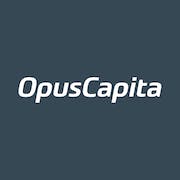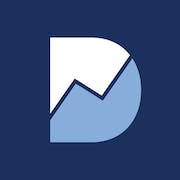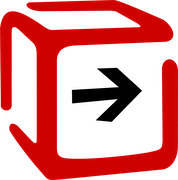Are you looking for the best sourcing software for your business? Our comprehensive buyers guide has got you covered with insights on key features and benefits to help you select the right one with ease.
Sourcing software has become a must-have tool for any organization that wants to remain competitive. Whether you're working in procurement, supply chain management, or purchasing, choosing the right one can make a huge difference in streamlining your operations and delivering cost savings. With so many solutions available in the market, it can be overwhelming to navigate the buying process. That's why we've compiled this comprehensive guide to help you understand the key features, benefits, and considerations of sourcing technology, enabling you to make an informed decision that best meets your organization's unique needs.
What is a sourcing solution?
This refers to any computer program that aids in the procurement of goods and services necessary for business operations. Sourcing technology facilitates a number of processes, including supplier identification, request for proposal (RFP) management, price negotiation, purchase order (PO) creation, and supplier performance tracking. With the right software solution, companies can streamline their procurement operations and gain a competitive edge in a crowded marketplace.
There are several common use cases for this tool, including:
- Strategic sourcing: Organizations can use it to automate the strategic sourcing process, thereby saving time and resources.
- Supplier management: The software can help companies manage their relationships with suppliers by providing them with real-time performance metrics and alerts.
- Procure-to-pay: It can streamline the entire procure-to-pay process by automating the creation of purchase orders and the receipt of goods and services.
- Spend management: By using a sourcing program, organizations can gain greater visibility into their spend across categories, suppliers, and geographies, which can drive down costs and improve supplier performance.
- Contract management: A sourcing tool can help companies manage their supplier contracts more effectively by automating the contract generation process and providing alerts for key contract milestones.
Small businesses to large corporations can benefit from making use of this platform, particularly those in the manufacturing, retail, construction, and finance sectors, are good candidates.
What are the benefits of utilizing a sourcing platform?
Here are some of the main benefits your business will enjoy by using a sourcing package:
- Better procurement decisions: Sourcing technology helps businesses select the right suppliers or vendors, making procurement decisions easier and more informed. This leads to better purchase decisions, which results in a more efficient procurement process and reduces risks related to supplier performance.
- Improved supplier management: It ensures that businesses establish partnerships with the best-suited suppliers in terms of pricing, quality, and reliability. This helps to improve the overall health of supplier relationships and helps businesses to avoid the negative effects associated with poor supplier management.
- Increased visibility: By using one, businesses gain better visibility into supplier performance, which allows them to identify problematic areas and take corrective measures. This leads to a more proactive approach to managing the supply chain and reduces the chances of disruptions and delivery delays.
- Cost savings: It also helps businesses to reduce costs by identifying cost-effective and suitable suppliers, optimize the procurement process, and streamline the supply chain. This leads to lower overheads, resulting in substantial cost savings.
- Time savings: The system automates many procurement processes, saving businesses valuable time that can be invested elsewhere in the business. This translates to increased productivity and faster time-to-market. Statistics have shown that strategic sourcing software can lead to 50% or more in time savings.
10 key features of sourcing software
Sourcing software offers a wide range of functions that make it an invaluable asset to most businesses. Here are the most common ones to look out for:
1. Supplier discovery: The solution enables businesses to easily discover new suppliers and evaluate their performance based on predefined criteria such as quality, delivery, and cost.
2. Supplier onboarding: Once a supplier is identified, a sourcing platform can manage the process of onboarding them into the business's supply chain. This includes verifying supplier details, conducting background checks, and managing contracts.
3. Sourcing events: Itstreamlines the entire sourcing event process through automated bid management, document sharing, and collaboration tools.
4. Contract management: The tool can automate the entire contract management process, making it easy for businesses to manage supplier contracts and track contract details such as renewal dates, pricing, and termination clauses.
5. RFx management: It also allows users to manage the entire RFx process, from creating the request to analyzing the responses and awarding contracts.
6. Supplier scorecards: A sourcing tool can generate supplier scorecards that allow businesses to assess supplier performance metrics and identify opportunities for improvement.
7. Spend analysis: It enables businesses to track their spend across multiple suppliers and categories, providing visibility into spend patterns and identifying opportunities for cost savings.
8. Supplier performance tracking: With sourcing technology, businesses can track supplier performance metrics and identify opportunities for improvement. This includes tracking on-time delivery, quality, and compliance with contractual terms.
9. Automated workflows: It can automate common sourcing workflows, such as supplier selection, pricing negotiation, and purchase order management. This helps streamline the procurement process and saves time and resources.
10. Reporting and analytics: A sourcing solution can provide businesses with real-time reporting and analytics on sourcing performance, helping users to identify areas for improvement and make informed sourcing decisions.
Key considerations when purchasing a sourcing tool
There are so many software options available on the market, and it can be challenging to choose the right application that meets the needs of your business. Let us explore the key factors you should consider when making a purchasing decision:
1. Features and functionality - One of the most critical factors to consider when purchasing sourcing software is the features and functionality it offers. You want to ensure that the solution has all the essential features that your business requires, such as request for proposal (RFP) capabilities, contract management, supplier management, and so on.
2. Integration - You need to consider how well the system integrates with other business systems you are currently using. It should integrate seamlessly with your existing procurement, operations, and accounting systems so that users can continue with day-to-day operations without disruption.
3. Ease of use - It's important to select an app that is easy to use and navigate as it should have an intuitive interface that doesn't require extensive training and support to start using.
4. Customizability - The program should also be customizable to fit your business needs. Some software solutions have limited customization options that could limit your ability to tailor the package to your specific business needs. Therefore, you should consider software options that allow you to customize fields, workflows, and integrations.
5. Support and training - You should also consider the type of support and training available from the software vendor. Is there online documentation or instruction videos available? Does the vendor offer a helpdesk or 24/7 support?
6. Budget - Finally, you should consider your budget. Sourcing systems can vary in cost, and you want to select one that aligns with your business needs and budget.
Market trends for sourcing software
Sourcing technology is a rapidly growing industry, and its trends are evolving every year. In 2024 and beyond, businesses can expect to see several significant changes and advancements in this area. Experts predict an 8.5% growth in the global sourcing software market by 2030, which is being driven by the increasing demand for cloud-based solutions and the rising trend of Bring Your Own Device (BYOD).
One of the biggest trends in sourcing software is the integration of artificial intelligence (AI). AI can be utilized to automate repetitive tasks, such as candidate screening and interview scheduling. This will save time and effort for recruiters and hiring managers, allowing them to focus on more strategic tasks. Blockchain technology is also being explored for its potential to enhance transparency and traceability in the supply chain.
Another trend is thegrowing emphasis on sustainability and ethical sourcing practices. Companies are using sourcing software to ensure their supply chains are environmentally friendly and socially responsible, tracking metrics such as carbon footprint and labor practices. Additionally, the shift towards cloud-based sourcing solutions continues to grow due to its scalability, cost-efficiency, and accessibility.
Other sourcing software innovations include video interviewingcapabilities which are being incorporated into sourcing technology, allowing recruiters to conduct remote interviews efficiently. Mobile recruiting, the use of chatbots for candidate engagement, and the integration of social media platforms for candidate sourcing are also trends emerging.
Conclusion
In conclusion, with its many benefits, it is no wonder more and more businesses are turning to sourcing software to optimize their processes and stay ahead of the competition. As the platform continues to advance, businesses should stay ahead of the curve by adopting the outlined trends. By doing so, they will be better equipped to attract and retain top talent, streamline their recruitment process, and gain a competitive advantage in their industry.








